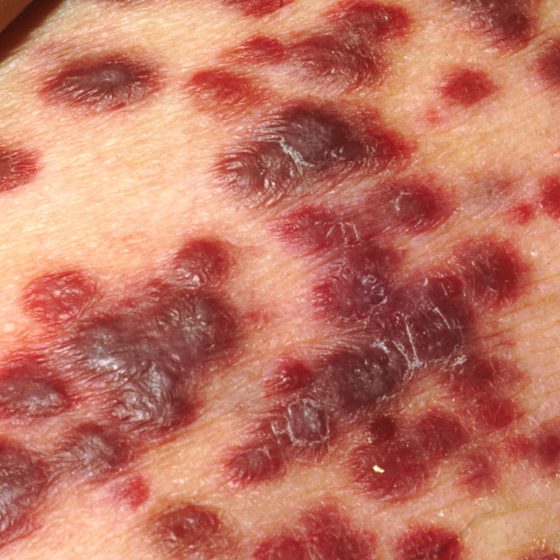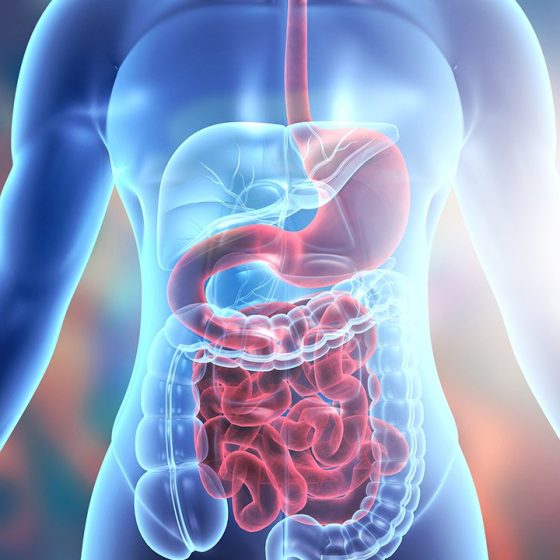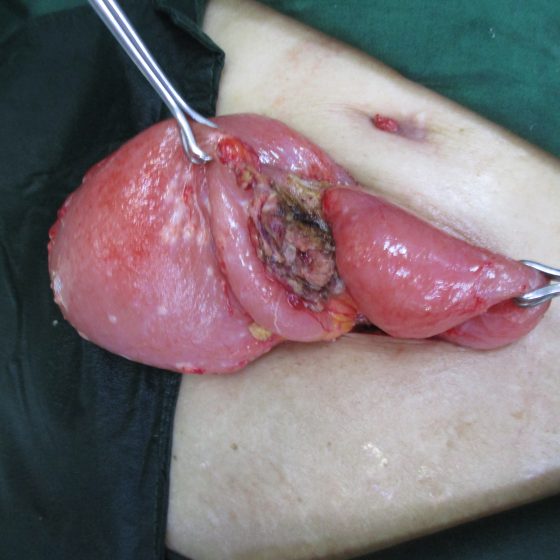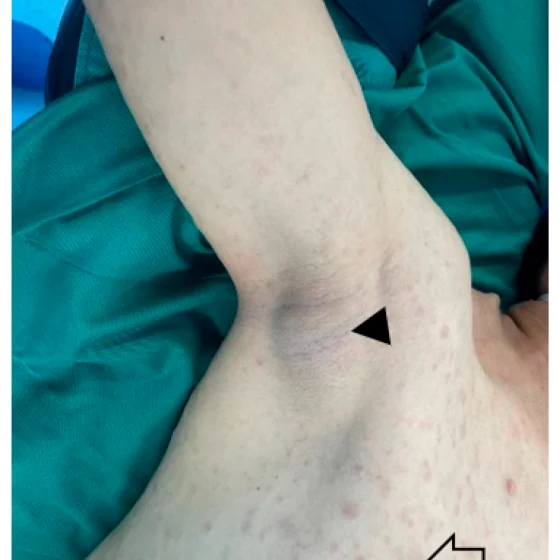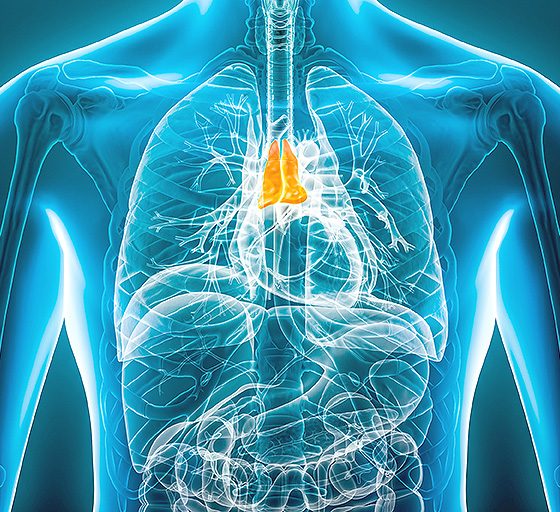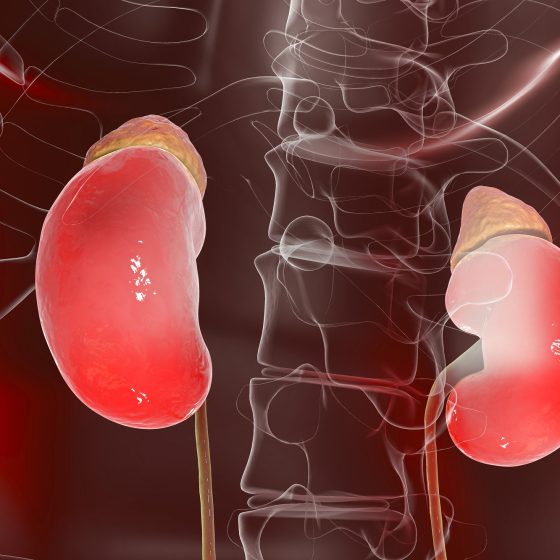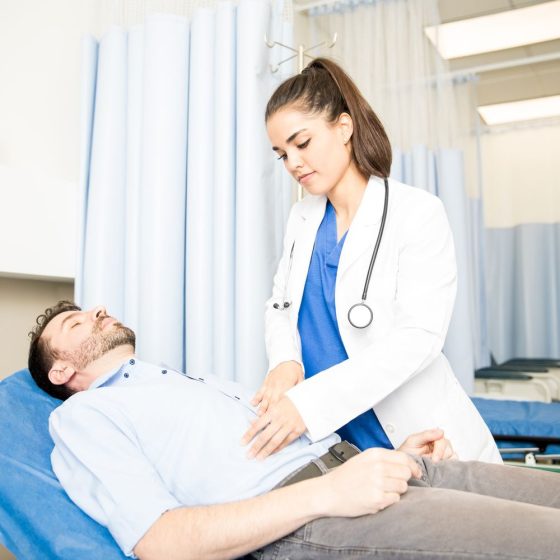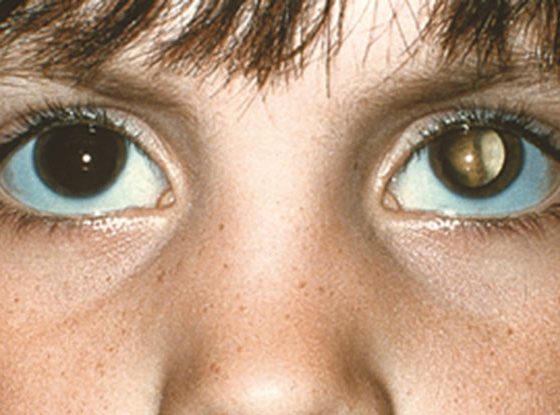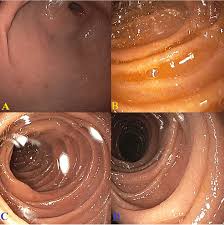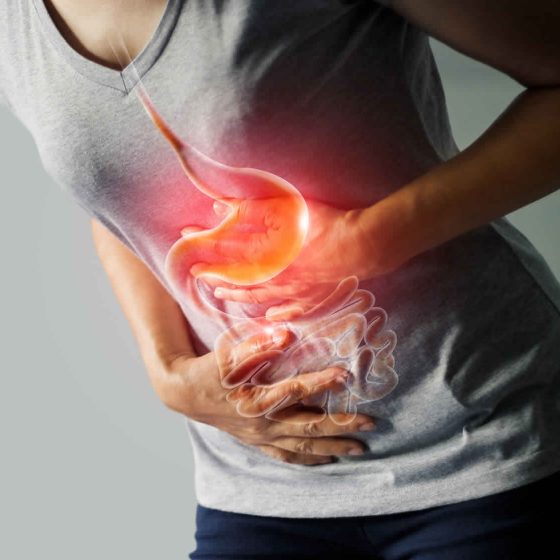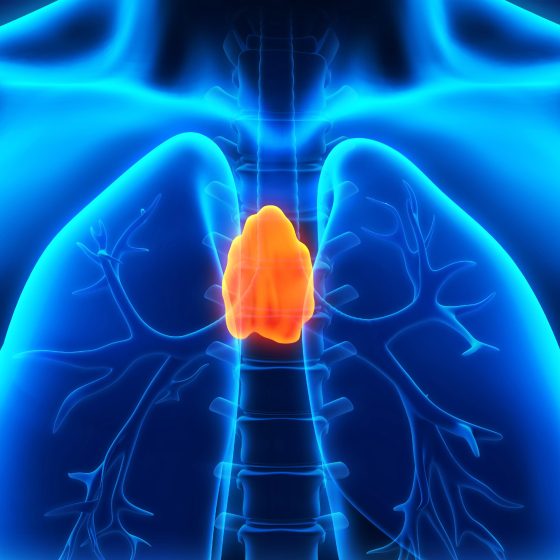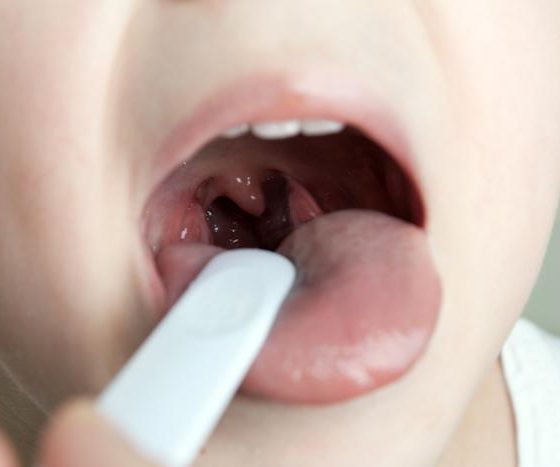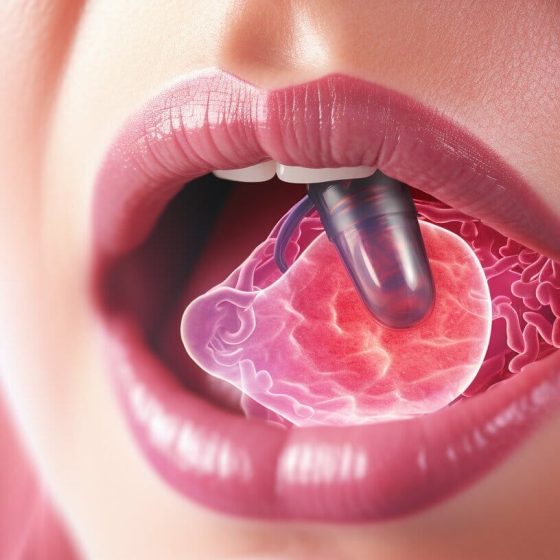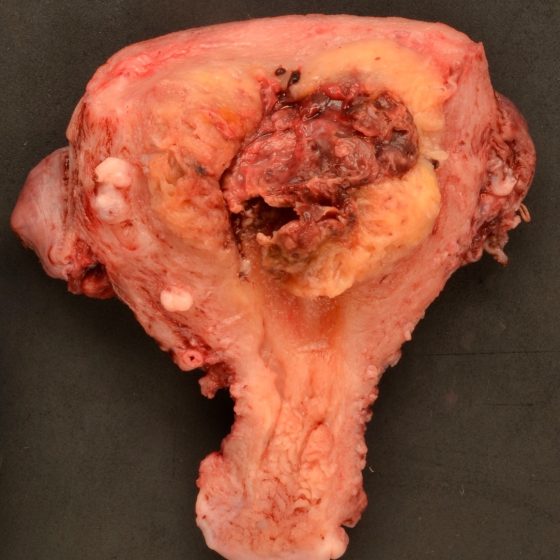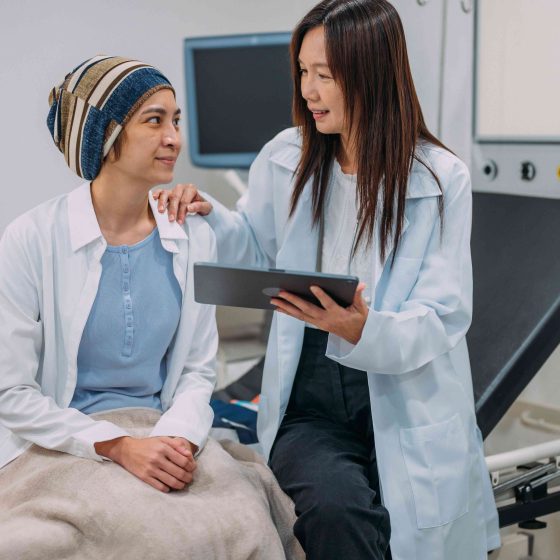Treatment for cancer
Kaposi’s sarcoma
Kaposi’s sarcoma (KS) is a rare type of soft tissue sarcoma. A soft tissue sarcoma is a type of cancer. What is Kaposi’s sarcoma? Kaposi’s sarcoma (KS) develops from cells called endothelial cells, which line the blood and lymph vessels. It is most commonly found on the skin, but it can also affect the inside of the body, such as the lymph nodes, lungs, bowel, liver and spleen. KS growths are also called lesions or tumours. KS develops in a different way from other types of cancer. Most cancers begin in one place in the body and may then spread to
Treatment for Large bowel and rectal neuroendocrine tumours (NETs)
The treatment you have for a large bowel or rectal neuroendocrine tumour (NET) depends on a number of factors. This includes where the cancer started, its size and whether it has spread (the stage). Surgery is the main treatment for large bowel and rectal NETs and is usually the only treatment that can cure it. Which treatment do I need? A team of doctors and other professionals discuss the best treatment and care for you. They are called a multidisciplinary team (MDT). The treatment you have depends on: where the large bowel or rectal NET started and its size whether
Linitis plastica of the stomach
Gastric linitis plastica is the medical term for a rare type of stomach (gastric) cancer. It can thicken your stomach wall and affect digestion. Treatment for linitis plastica is like treatment for other types of stomach cancers. What is linitis plastica? Linitis plastica is a type of adenocarcinoma. Adenocarcinoma is the most common form of stomach cancer. Linitis plastica spreads to the muscles of the stomach wall and makes it thicker and more rigid. This means that the stomach can’t hold as much and doesn’t stretch or move as it should when you’re digesting food. This stiff walled stomach is sometimes
Malignant peripheral nerve sheath tumor (MPNST)
Malignant peripheral nerve sheath tumours (MPNSTs) is rare. It is a type of peripheral nerve sheath tumour that is cancerous (malignant). Most peripheral nerve sheath tumours are not cancerous (benign). A tumour is a lump or growth in the body. One type of non cancerous peripheral nerve sheath tumour is called a schwannoma. What is a malignant peripheral nerve sheath tumour? Malignant peripheral nerve sheath tumours are a type of peripheral nerve sheath tumour. These cancers begin in the layer (nerve sheath) that cover the peripheral nerves. Peripheral nerves send messages between the brain and spinal cord and the rest
Mediastinal germ cell tumours
The mediastinum is the area in the centre of the chest, between the lungs. It is pronounced media-sty-num. Mediastinal germ cell tumours are a type of tumour that grow in the mediastinum. They develop in a type of cell called germ cells. There are different types of mediastinal germ cell tumours. Some mediastinal germ cell tumours are non cancerous (benign). Your treatment depends on what type of mediastinal germ cell tumour you have. Treatment options include surgery and chemotherapy. What are mediastinal germ cell tumours? Germ cell tumours develop in germ cells. These are the cells in the body that develop into
Merkel cell carcinoma (MCC)
Merkel cell carcinoma (MCC) is a rare type of skin cancer. It starts in the Merkel cells, which are usually in the top layer of the skin (the epidermis). These cells are near the nerve endings and they help us respond to touch. MCC is very rare. Just over 1,500 people were diagnosed with MCC in England between 1999 and 2008. Because Merkel cells are a type of neuroendocrine cell, MCC is also called a neuroendocrine tumour (NET) of the skin. Risks and causes of MCC There are some factors that increase your risk of developing Merkel cell carcinoma (MCC).
Treatments for neuroblastoma
Doctors plan your child’s treatment in one of the major children’s cancer centres. Your child has most of their treatment in this specialist centre. They might have some care at a hospital closer to home. Children’s cancer centres have teams of specialists who know about neuroblastoma and the best way to treat them. The main treatments include: surgery chemotherapy radiotherapy immunotherapy Decisions about treatment The specialist team plan treatment based on several factors, including your child’s age. Your child’s treatment depends on their risk group. A pathologist looks at the neuroblastoma cells under a microscope. This along with the scans and other
Treatment for phaeochromocytomas
The main treatment for phaeochromocytoma is surgery. Other treatments include internal radiotherapy, external radiotherapy and chemotherapy. Your treatment depends on different factors including: the size of the tumour whether it has spread your general health and fitness A team of doctors and other professionals discuss the best treatment and care for you. They are called a multidisciplinary team (MDT). The team usually includes a: specialist surgeon doctor specialising in hormone disorders (endocrinologist) cancer doctor (oncologist) doctor specialising in the diseases of tissues or cells (pathologist) doctor specialised in reading scans (radiologist) clinical nurse specialist (CNS) You may need to travel
Treatment for pseudomyxoma peritonei
The main treatments for pseudomyxoma peritonei (PMP) are surgery and chemotherapy. Your treatment depends on the size of the cancer and your general health. You might not start treatment straight away. Your doctor closely monitors your cancer in case you need treatment in the future. This is called watch and wait. If you need treatment you might have: surgery combined with chemotherapy into the tummy (abdomen) surgery to remove as much cancer as possible (debulking surgery) chemotherapy Watch and wait Your doctor might decide to closely monitor your cancer if it’s small and slow growing and you don’t currently need
Treating retinoblastoma
Retinoblastoma is rare and so your child will go to a specialist centre for treatment. There are different treatments such as freezing and laser therapy, chemotherapy, radiotherapy and surgery. The treatment your child has depends on several things including the size of the cancer and if it is in one or both eyes. Treatment centres There are 2 specialist retinoblastoma centres in England and they are: The Royal London Hospital Birmingham Children’s Hospital These 2 centres serve all parts of the UK including Wales, Scotland and Northern Ireland. They have teams of specialists who know a lot about retinoblastoma and
Treatment for small bowel cancer
Your treatment will depend on what type of small bowel cancer you have. This page is about the treatment you might have if you have small bowel adenocarcinoma. This is the most common type of small bowel cancer. Treatment for other types of small bowel cancer, such as neuroendocrine tumours and lymphoma will be different. Deciding which treatment you need Your doctor will talk to you about the treatment they suggest. They will explain its benefits and the possible side effects. Your treatment will depend on: where your cancer is how big it is and whether it has spread (the stage) the type
Treatment for small bowel neuroendocrine tumours
The treatment you have depends on a number of things. This includes where the cancer started, its size and whether it has spread (the stage). Surgery is the main treatment for small bowel neuroendocrine tumours. But surgery isn’t always possible. Some small bowel neuroendocrine tumours might have already started to spread when you are diagnosed. Or you might not be well enough to have it. You continue to have treatment to help your symptoms if surgery isn’t an option. Deciding which treatment you need A team of doctors and other professionals discuss the best treatment and care for you. They
Treatment by type of stomach NET
The treatment you have for a stomach neuroendocrine tumour (NET) depends on a number of things. This includes the type of NET and whether it has spread. Doctors call this the stage of the cancer. NETs grow at different rates, but they often grow very slowly. Some might not grow at all for months or years. So, you might not need treatment straight away. Your doctor might ask you to have regular tests to keep an eye on it. Which treatment do I need? A team of doctors and other professionals discuss the best treatment and care for you. They
Thymus gland cancer
Cancer of the thymus gland is rare. Most cancers that start in the thymus gland are called thymomas. There’s also a much rarer form of thymus gland cancer called thymic carcinoma. What is the thymus gland? The thymus gland is in your chest, in between your lungs. A gland is an organ in your body that makes and releases substances such as hormones. The thymus gland is part of our lymphatic system . It’s involved in the development of a type of white blood cell called a T lymphocyte. These white blood cells are part of your immune system .
Treating Wilms tumour
Doctors plan your child’s treatment in one of the UK’s children’s cancer centres. Your child has most of their treatment in this specialist centre, but some care might take place at a hospital closer to home. Children’s cancer centres have teams of specialists who know about Wilms tumours and the best way to treat them. Wilms tumour is curable in about 9 out of 10 children (about 90%). The main treatments include: chemotherapy for almost all children surgery for all children radiotherapy for some children In the UK and many other countries, children usually start treatment without having a biopsy if the tumour looks
Treating tonsil cancer
The main treatments for tonsil cancer are surgery, radiotherapy and chemotherapy. You might have a combination of these or one treatment on its own. The tonsils are part of the oropharynx and treatment is similar to other cancers of the oropharynx. Treatment by stage Staging is a way of describing the size of cancer and how far it has grown. We have information about treatment for early and advanced cancer. Your doctor will tell you more about the stage of your cancer and the treatment you will have. There is an increase in the number of tonsil cancers that are
Treating tongue cancer
The main treatments for tongue cancer are surgery, radiotherapy and chemotherapy, either combined or on their own. Your treatment depends on how big the cancer is and whether it has spread (the stage). It also depends on which part of the tongue is affected. Treating the oral tongue The front two thirds of the tongue (oral tongue) are treated like a mouth cancer. Early stage Early cancer means your cancer is smaller than 4cm and is contained within the tongue. The most common treatment is surgery to remove the affected area. You might also have radiotherapy after surgery to try
Placental site trophoblastic tumour and epithelioid trophoblastic tumour
Placental site trophoblastic tumours (PSTTs) and epithelioid trophoblastic tumours (ETTs) are cancers that happen after pregnancy. They are extremely rare and are slow growing. What are placental site trophoblastic tumours and epithelioid trophoblastic tumours? These tumours are part of a group of conditions called gestational trophoblastic disease (GTD). GTD is the name for abnormal cells or tumours that grow from the tissue that forms in the womb during pregnancy. Less than 1 in 100 (less than 1%) of GTDs are placental site trophoblastic tumours or epithelioid trophoblastic tumours. In PSTT and ETT the tumour develops from the cells that grow
Recovery package for cancer
The recovery package is a set of interventions that your healthcare team uses. An intervention means that you and your team find ways to help you with your care needs and worries as they come up. It helps to improve your experience of living with cancer. The recovery package aims to support people affected by cancer to: feel more in control improve their quality of life Your medical team at the hospital and GP work together to make sure you receive the recovery package. The recovery package is available throughout England. In Northern Ireland, Scotland and Wales, there are similar
How do I mentally prepare for cancer treatment?
You can help yourself to get ready for cancer treatment by looking after your mental wellbeing. Focussing on your mental health is one part of prehabilitation. This is a programme of advice and support that can help to prepare you for treatment. The other parts are eating a varied diet and being physically active. Focusing on these three areas, in whatever time you have before treatment starts, can help you: feel more in control of your health cope better during treatment recover better And by making it part of life with cancer, it can help you to live well in
How do I physically prepare for cancer treatment ?
You can help yourself to get ready for cancer treatment by being physically active. Being more active and exercising is one part of prehabilitation. This is a programme of advice and support that can help to prepare you for treatment. The other parts are eating a varied diet and looking after your mental wellbeing. Focusing on these three areas, in whatever time you have before treatment starts can: help you feel more in control of your health cope better during treatment recover better And by making it part of life with cancer, it can help you to live well in the
What should I eat to prepare for cancer treatment ?
You can help yourself to get ready for cancer treatment by trying to eat a wide range of foods in the right proportions, also called a varied diet. This includes eating enough protein, calories and other nutrients. Eating a varied diet is one part of prehabilitation. This is a programme of advice and support that can help to prepare you for treatment. The other parts are being physically active and looking after your mental wellbeing. Focusing on these three areas, in whatever time you have before treatment starts, can help you: feel more in control of your health cope better during
What is prehabilitation ?
Prehabilitation (prehab) means getting ready for cancer treatment in whatever time you have before it starts. It is a programme of support and advice that some NHS hospitals are using. It covers three particular parts of your health: what you’re eating and your weight physical activity or exercise mental wellbeing Stopping smoking and cutting down on alcohol can also help. It helps while you’re having treatment, with your recovery, as well as improving your overall health. How does prehabilitation help? At diagnosis, your medical team should screen you for any problems in the three areas above. Research shows that if you


